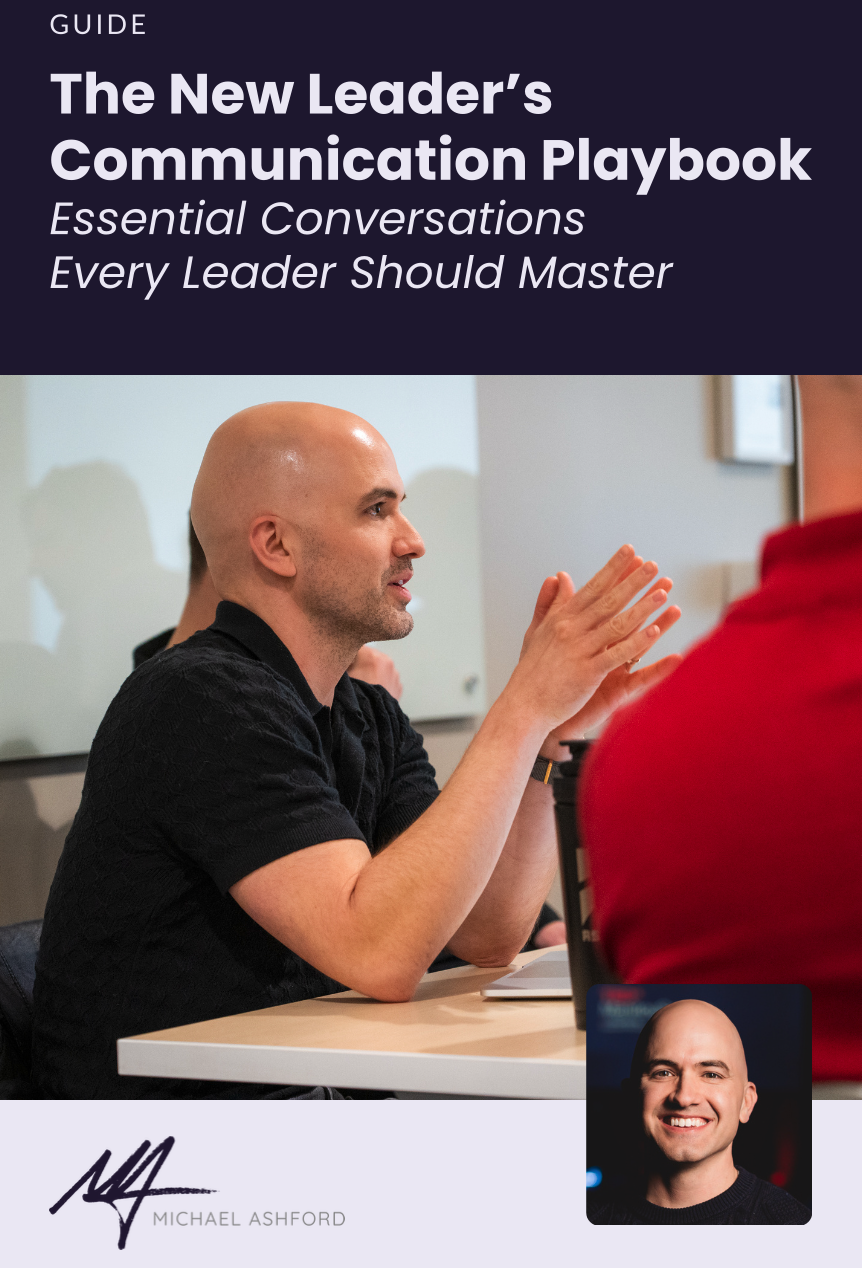The 5 leadership communication styles
When I was in fifth grade, I ran for class president.
I still remember the campaign slogan that I plastered on brightly colored posters all throughout the hallways and classrooms.
“Walk, run, or ride a bike to come and vote for Mike!”
With that kind of word artistry, the other candidates never stood a chance. I won in a landslide.
The fifth-grade class presidential election of 1992 at Bonner Springs Elementary marked the ignition of a decades-long leadership journey for me that hasn’t stopped.
From being named class president all four years of high school to landing a job as the Sports Editor at The Emporia Gazette newspaper right out of college to where I am now having spent 15+ years leading marketing teams at software companies, I have always found myself leading teams and groups.
Over the years, I’ve learned a lot about how effective leaders communicate.
I mean, one would hope, right?
It’s been 30 years since my fifth-grade election victory, and while I don’t love the idea of boiling something so nuanced as leadership communication down to just a few categories, there are undoubtedly themes I’ve noticed in every leader I’ve met, worked for or with, mentored, or observed.
But here’s the punchline: at one time or another in my career, I have employed each of these five communication styles.
Leadership communication is really hard, especially when you layer on personalities and circumstances.
Just think about how leaders might have communicated in May 2015 versus May 2025.
The two situations aren’t even remotely comparable.
But despite my apprehension to pare down so much nuance into just a handful of groupings, I can’t deny the patterns I’ve observed from leaders and the ways they communicate to their teams and their stakeholders, how they ask questions, and how they tell stories.
But I’m curious...am I missing something? Have you experienced a different style that I haven’t? Let me know.
In the meantime, here are what I have found to be the 5 communication styles of leaders.
The Flake
A leader who communicates as a Flake has pet ideas that are most important to them, and they can be pretty blasé about nearly everything else. A leader who communicates as a Flake also frequently changes their mind about what has captured their attention, so it becomes difficult to prioritize projects and strategize because it’s a constantly moving target that only the leader truly knows at any given time.
Flake communicators rarely take time to consider how their flighty nature negatively affects those around them, causing disruption and derailing progress at nearly every turn. They are so consumed by chasing the latest vision in their own head that they rarely stop to ask the question, “I know we can, but should we?”
A Flake communicator can be great at building initial excitement for a new idea, but they lack consideration of long-term effects and follow-through action.
When they ask questions, they sound like: “I know you’re still working on that last project I said was a priority, but could you shift gears and work on this now?”
When they tell stories, they sound like: “I was listening to this podcast and it totally changed my perspective on how we’re doing things.”
Free Download: The New Leader’s Communication Playbook
The Debater
A Debater communicator has a way they like things to be done — their way. No one else’s ideas stand much of a chance of being heard.
A leader who communicates as a Debater believes they know (or pretends they know) exactly what to do in all situations, relying heavily on their own very specific experiences of the world to inform their decision making. And they will argue their way to “victory.”
A Debater communicator is also known as a steamroller — their ideas are getting pushed through no matter what stands in their way, and they will offer up straw man arguments and cherry-picked examples to prove their overtly biased points. In many instances, Debater communicators are covering up some form of inadequacy or feelings of imposter syndrome with self-assured displays of words and actions.
This communication style can be effective in short spurts (or in a courtroom), especially in crisis situations, but others quickly tire of it and will bail.
How they ask questions: “You want this project to succeed, don’t you?”
How they tell stories: “I’ve been in this exact same situation several times over the course of my career, and it’s played out exactly the same way every single time.”
The Deflector
To a Deflector communicator, problems are usually someone else’s fault, taking responsibility relies on someone else doing their part first, and challenges are often obstacles not worth tackling.
Career trauma tends to rear its head when it comes to Deflector communicators. They’ve been burned in the past, usually because of failed projects or soured relationships, and so they go into protection mode. They take delegation to the extreme to construct outlets for any potential future blame-shifting if things go wrong, yet are quick to take credit when things go well.
Deflector communicators don’t want to create peace — that would mean they would have to get their hands dirty with the work of making it happen. Instead, Deflectors want to keep the peace by creating cocoons of safety that shield them from any direct responsibility for an outcome gone wrong.
How they ask questions: “Who was in charge of making this decision?”
How they tell stories: “We considered a lot of different options to solve this problem, and we agreed that it would be best if we let things play out a little bit more while we gathered more information.”
The Confidant
A leader who communicates in the Confidant style wants to be everyone’s friend. They have a need for people to like them, and so they try to create deep relationships with those in their charge, with their peers, and with their superiors. The Confidant communicator values one-to-one interactions, where inside jokes and sometimes even secrets can be shared.
Sometimes, this desire to be liked leads to an inability to notice when things are going wrong. A Confidant communicator tends to make promises they can't keep, and like the Deflector, often blame inaction on key issues or concerns on forces outside of their control. The reality is that they don’t want to upset anyone, so they do nothing hoping that problems resolve themselves.
Confidant-style communicators often build incredibly loyal, trusting teams because of their people-pleasing nature and desire for everyone to “have fun.” Just don’t ask them to deal with disagreement or conflict.
This style can lead to stagnation, a lack of a desire to push themselves and their teams, and in more extreme cases, playing favorites and hiring people because they like them and not because they can do a good job.
How they ask questions: “While we wait for some answers on this problem, what can you focus on instead?”
How they tell stories: “I heard something that you’re definitely going to want to hear, and I probably shouldn’t tell you, but I can let you in on it if you promise not to tell anyone else.”
The Explorer
The Explorer communication style could also be called The Interviewer because that’s exactly what they do — they ask questions, and then they go on a journey to seek out answers to messy problems and ways to improve or inspire action, typically with a figurative flashlight and compass in their hands leading the way.
They try to extract the best from others rather than try to exert their will.
Explorer-style communicators understand that they couldn’t possibly have all of the answers, so they ask questions of others to gain a fuller perspective of what’s going on. They then mold their learnings into their own perspective and experience, using that combination as a guide for forward action.
Explorers are confident in their abilities to lead and guide teams, but they know they can't do it all on their own.
Explorer communicators must be careful to not cross into badgering territory when it comes to their question-asking. There comes a point where enough questions have been asked and decisions have to be made, and an Explorer can always think of more questions to ask.
How they ask questions: “Can you walk me through what happened from the beginning?”
How they tell stories: “I was noticing that things seemed a little off, so I started asking around to see if I could better understand what was happening. After talking it through with a few folks, here's what I've found so far...”
Interested in improving your leadership communication skills and presence? Learn more about what it’s like to work with me as your leadership communications coach.


